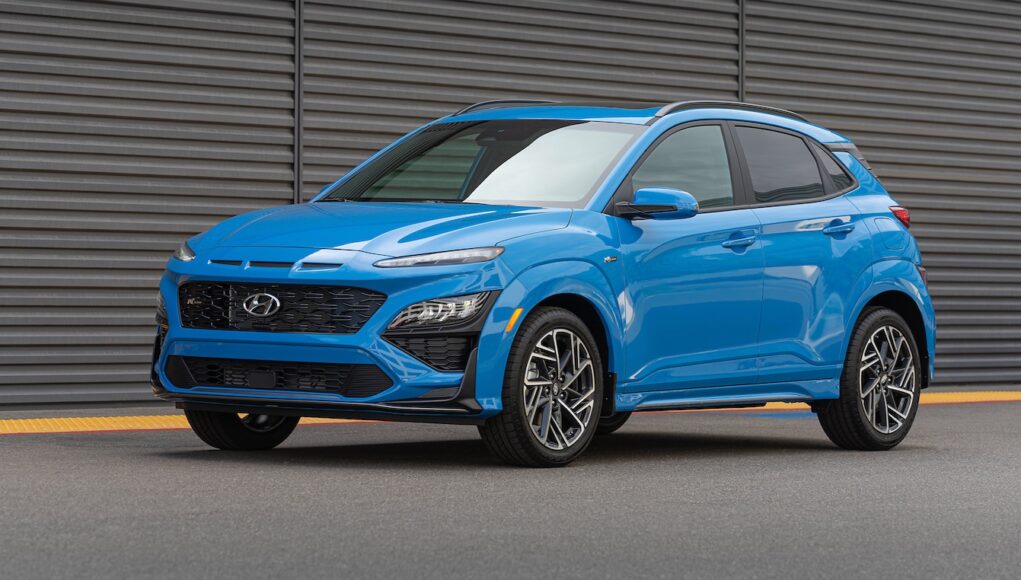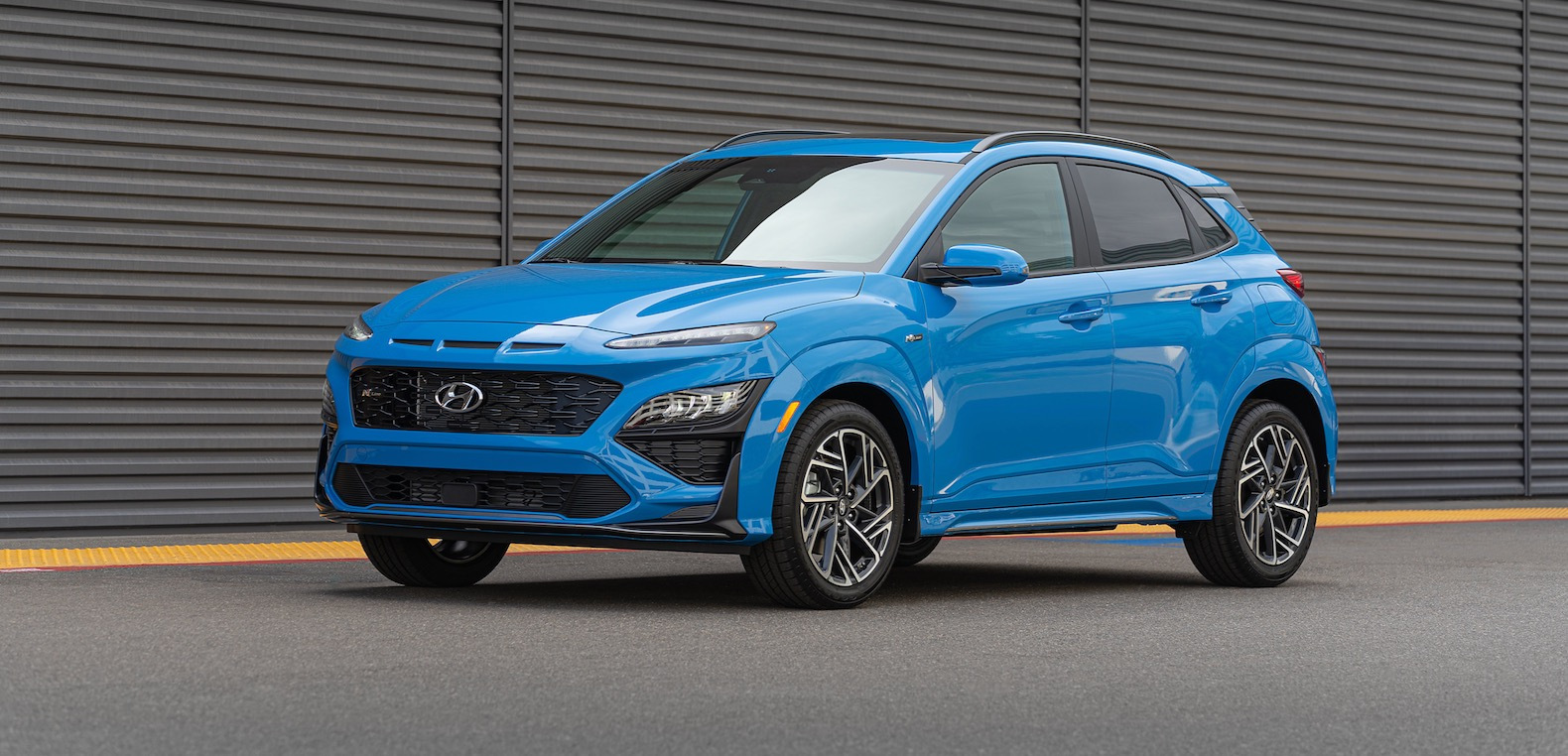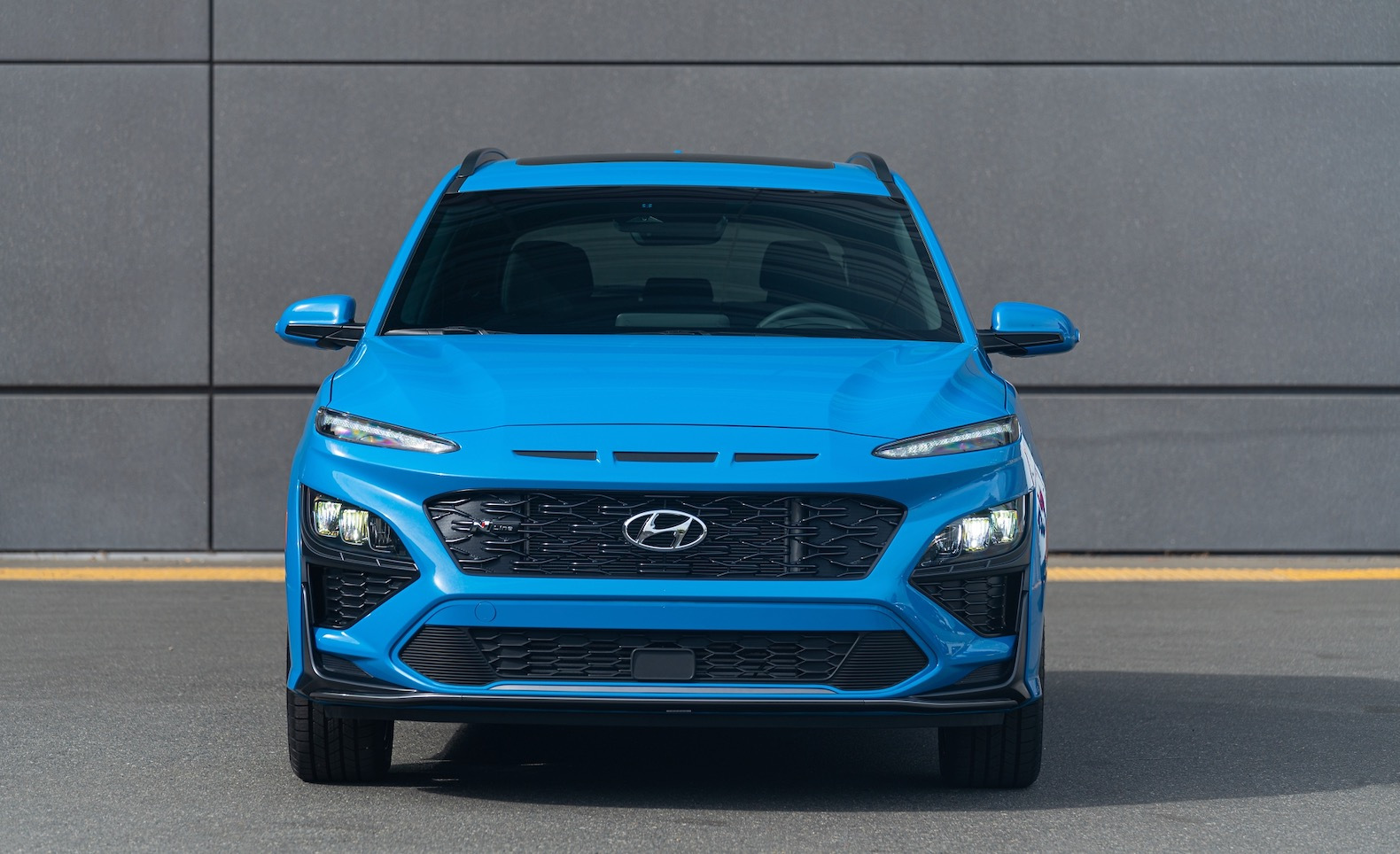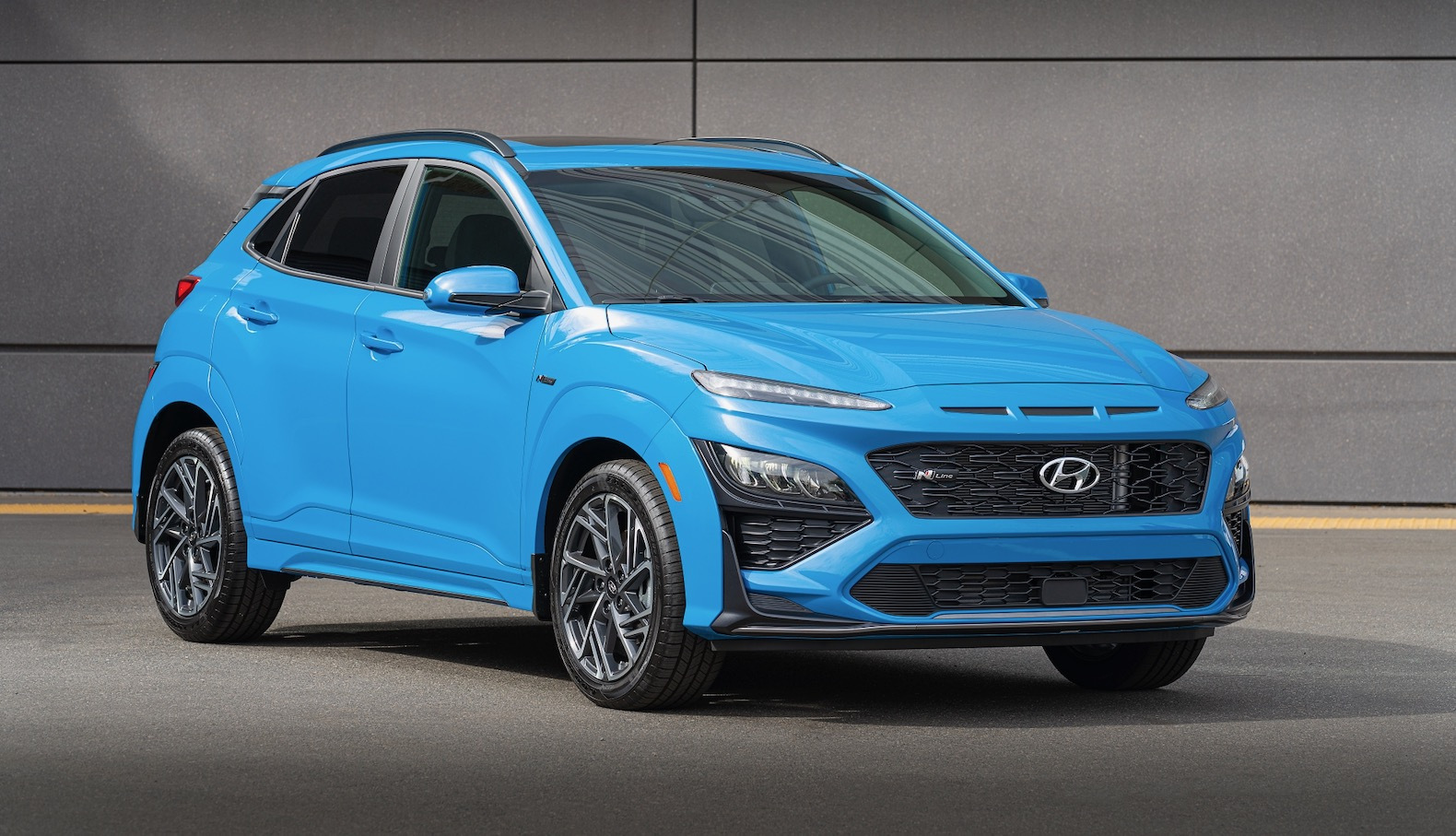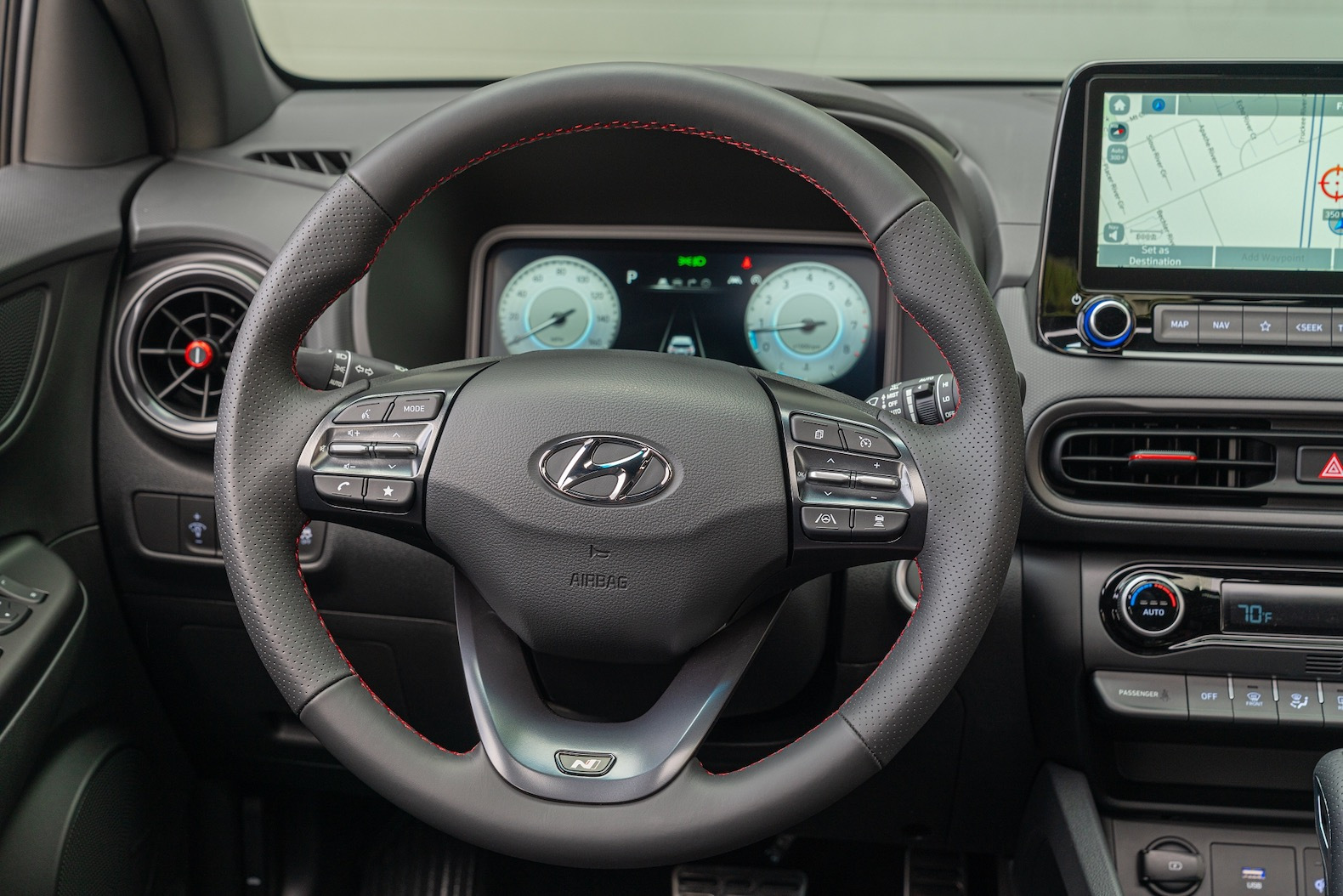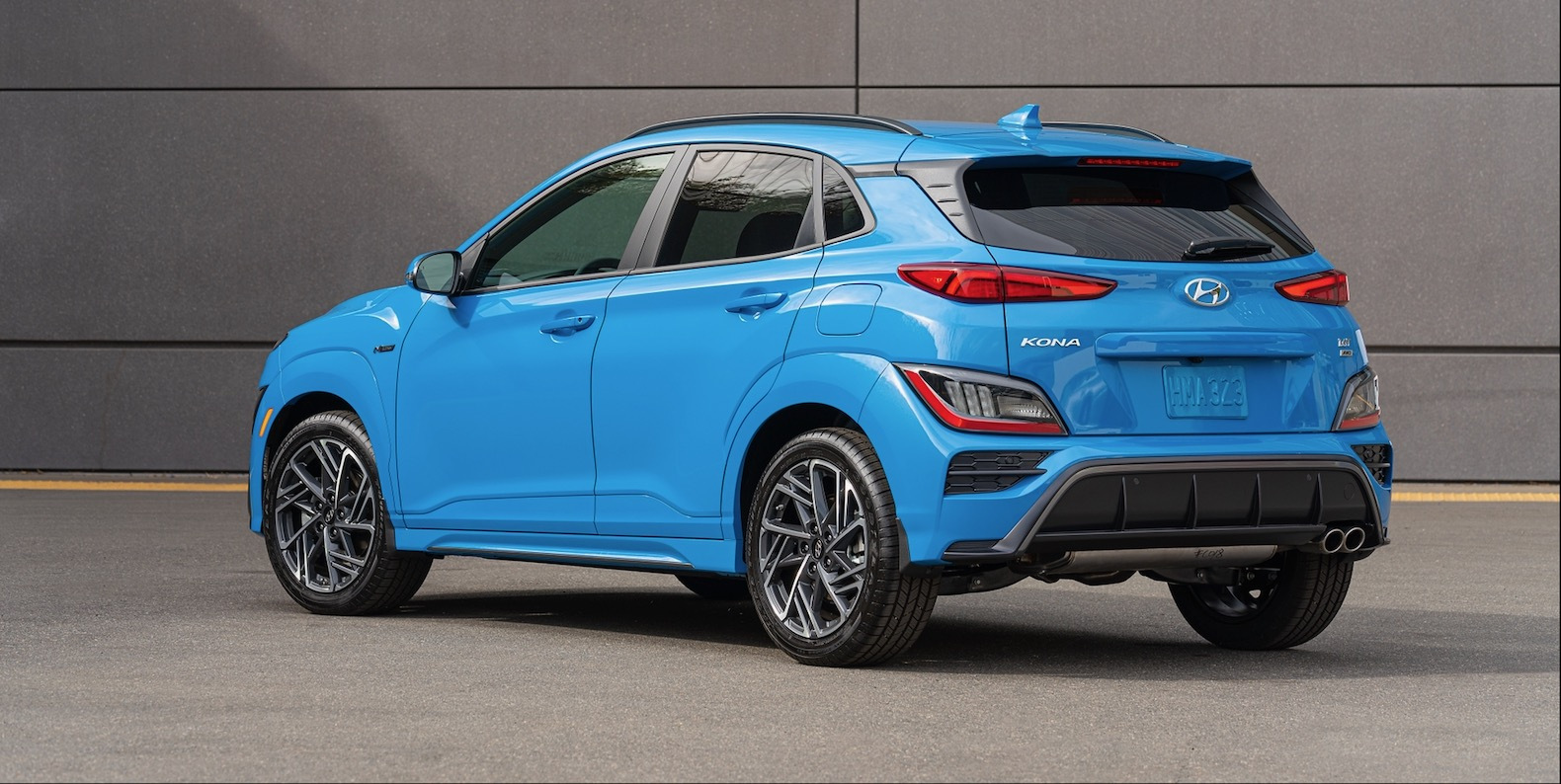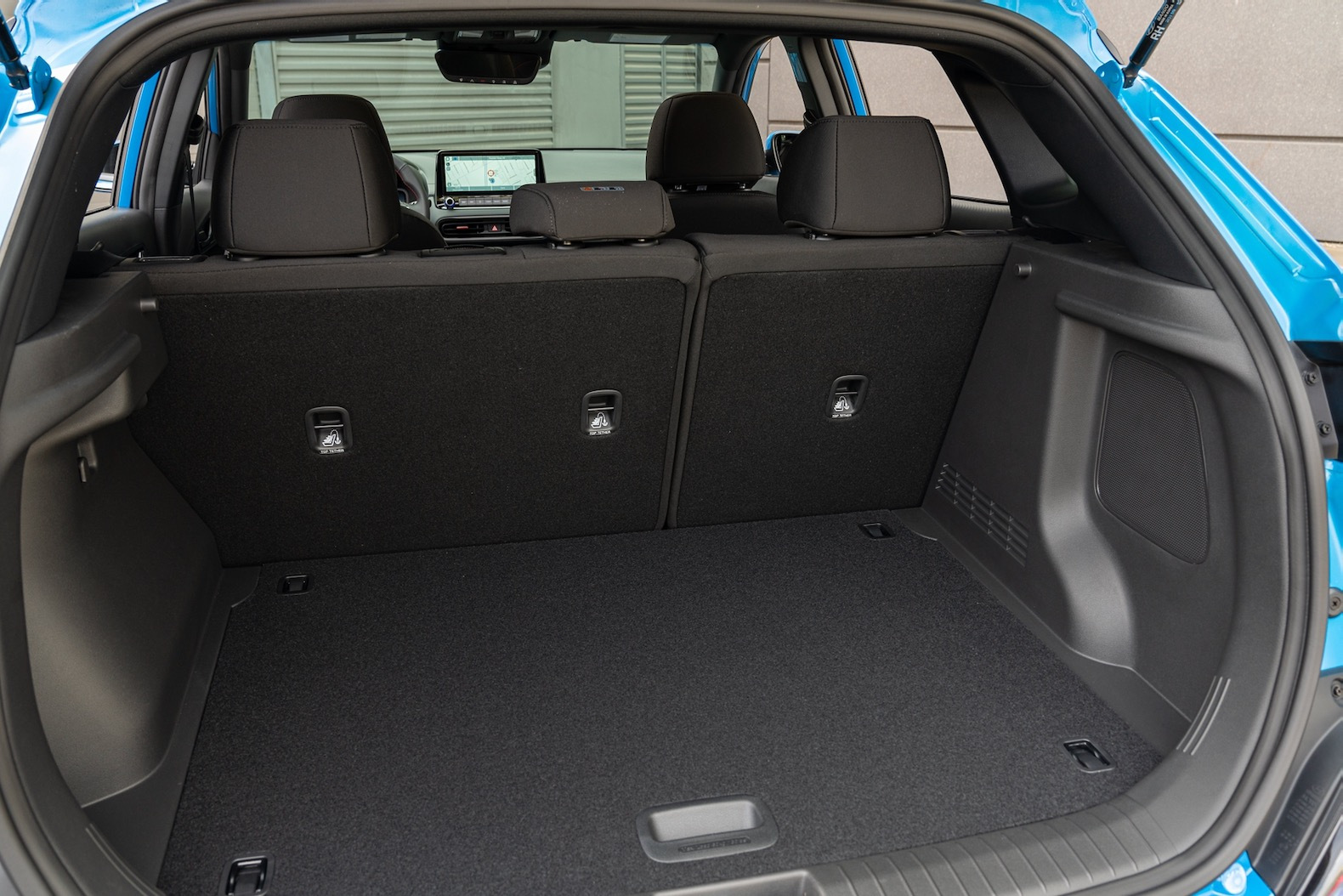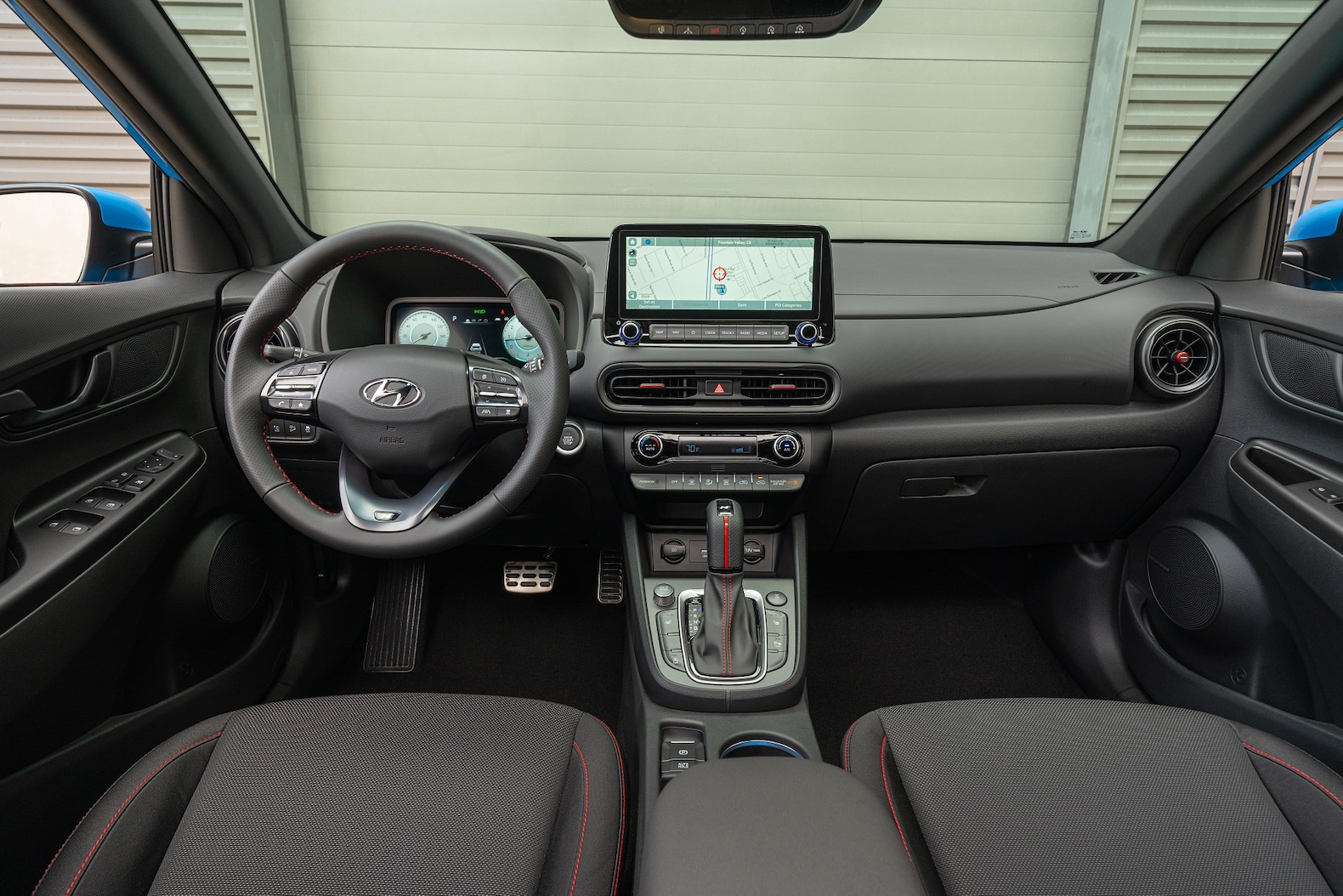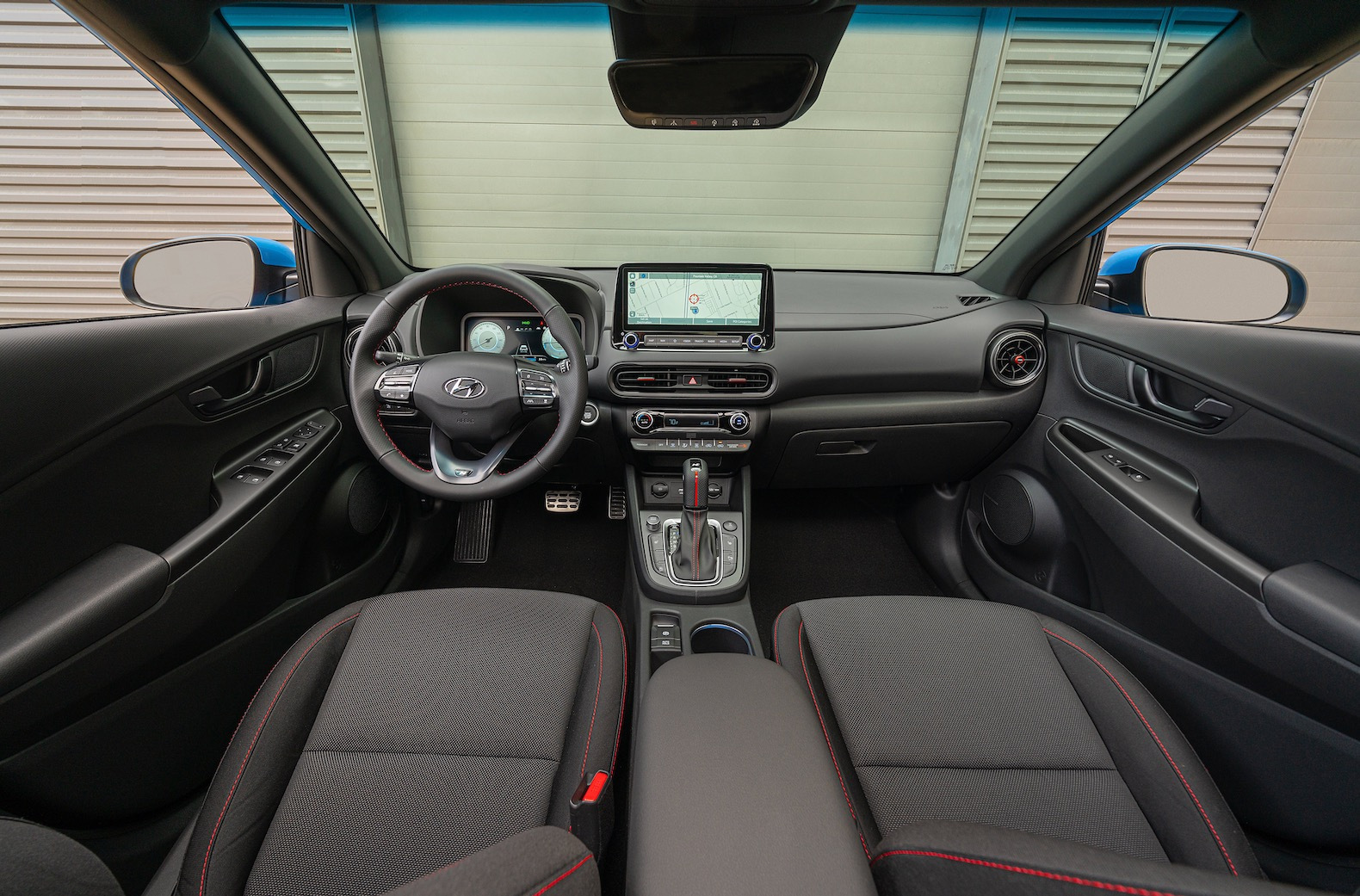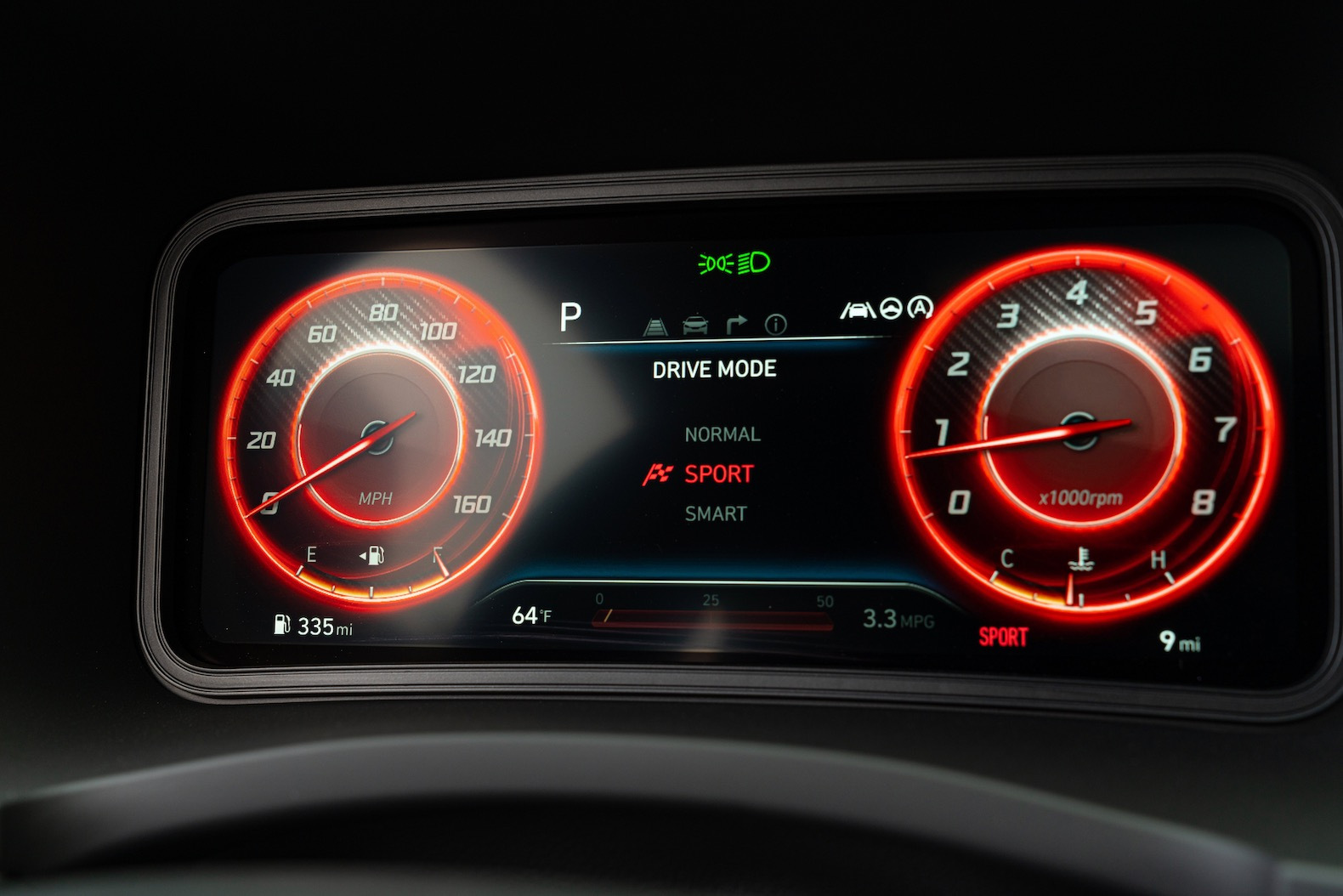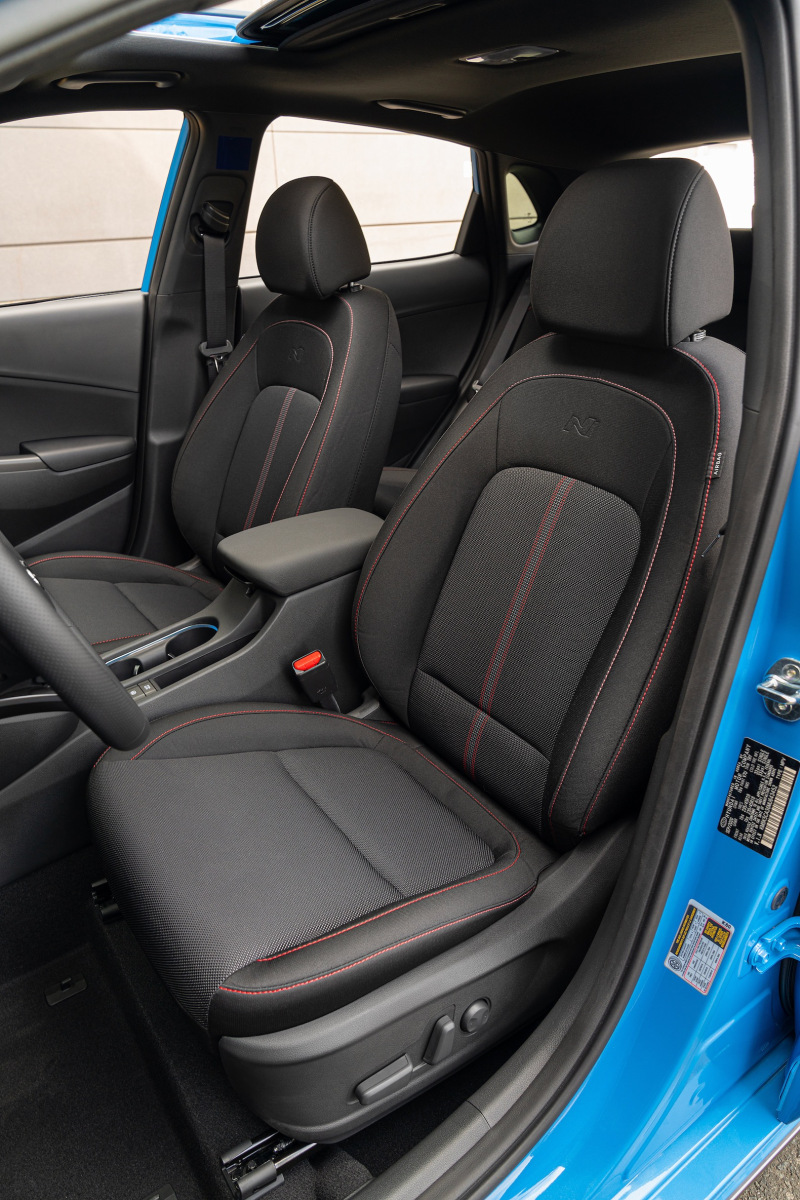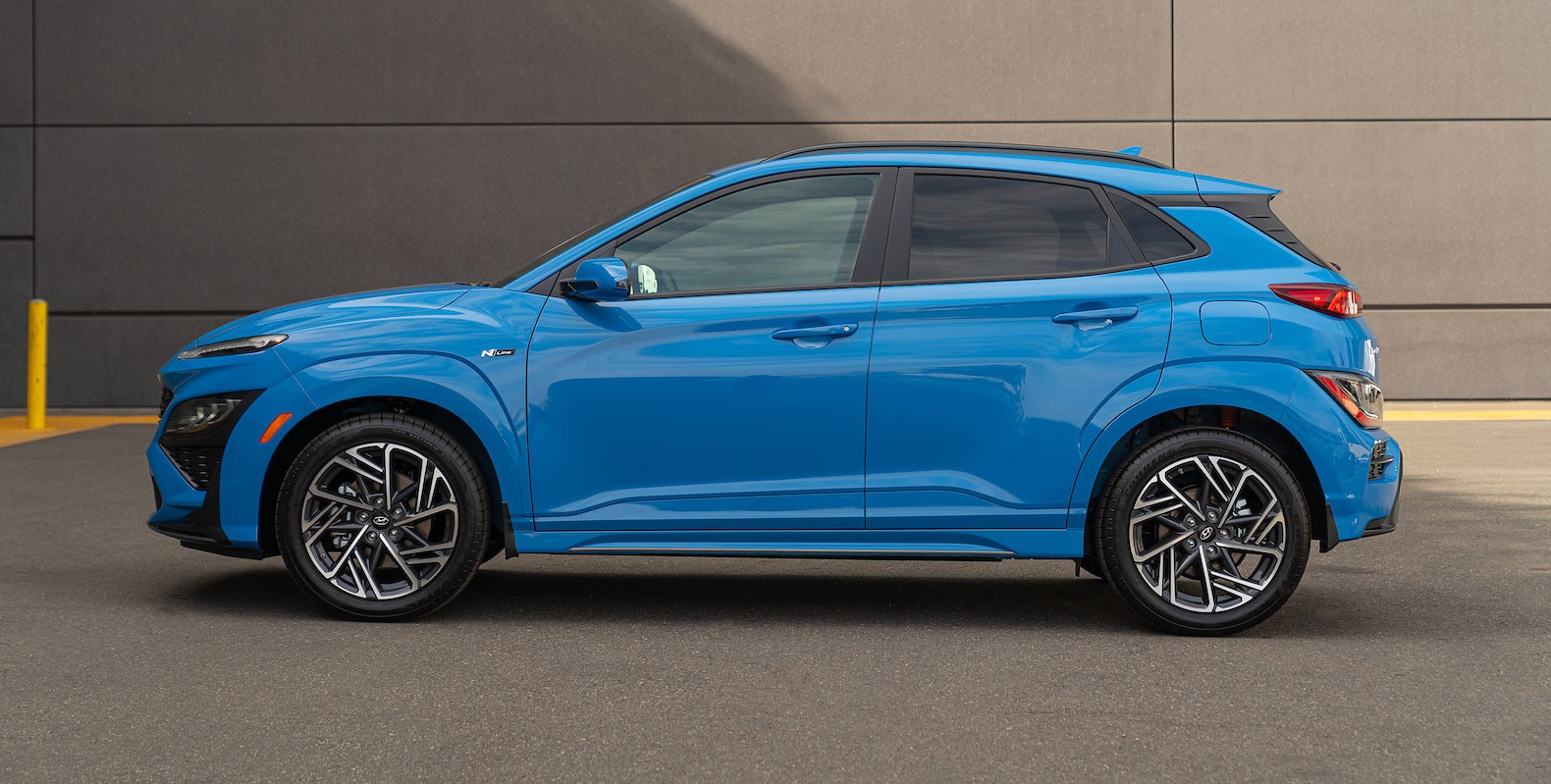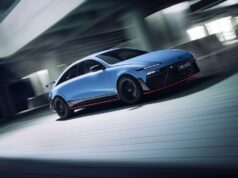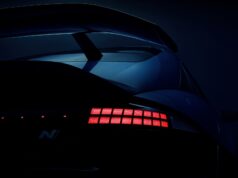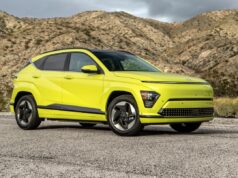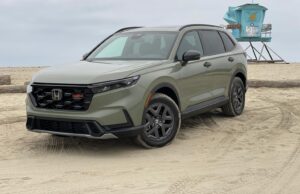The addition of the sporty N-Line and N models make the Kona more fun. The Hyundai Kona is a small crossover that offers a wide range of models, from the high-performance Kona N to the value-minded Kona. It competes against other small crossovers like the Kia Seltos, Honda HR-V, and Subaru Crosstrek. The Kona earns top marks on the strength of its standard features and technology, value, and safety ratings.
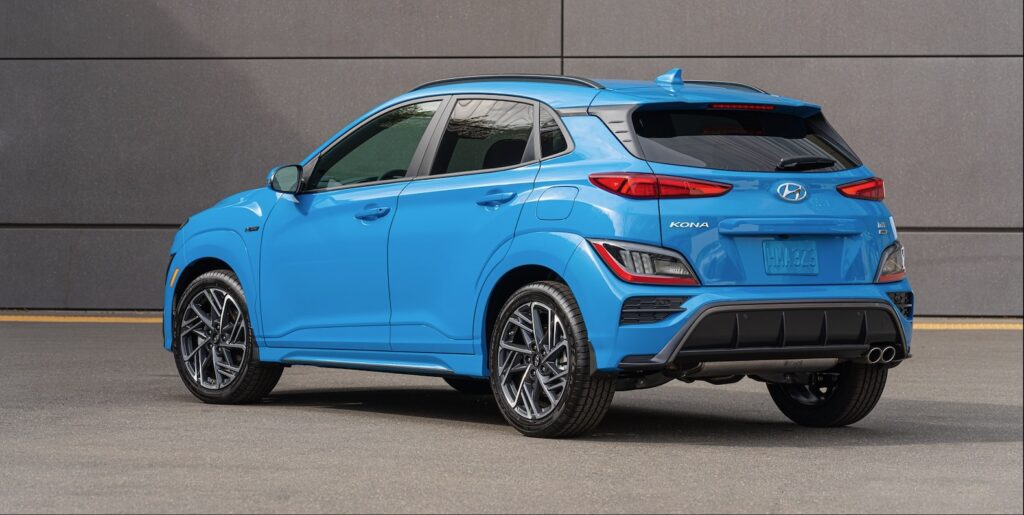
The Kona got big changes for 2022, with a redesign to the existing variants and the addition of two performance-oriented models, the Kona N-Line and Kona N. There’s also an electric version of the Kona that we review separately HERE.
The Kona retains its upright look in the redesign, but the details have changed. The black cladding that runs around the bottom of the SUV has been beefed up and the grille now pinches in just above the front bumper. Up front, the grille has been widened and both the front and rear bumpers have faux skid-plate designs on them. The sportier N-Line ditches the cladding for body colored panels, and the Kona N adds a double-wing roof spoiler, 19-inch alloy wheels, and larger intakes to feed its hungry turbocharger.
The Kona’s turbocharged engines provide most of the fun. The powertrains get a shuffle in the redesign with a new transmission tied to the base engine. A pair of turbocharged engines are also available, with both providing a serious and needed influx of power. Handling remains the Kona’s strength with FWD standard across the board, with AWD offered on all trims except for the Kona N.
The SE and SEL keep the same base engine as last year, a 147-hp 2.0-liter inline-4 that now comes with a continuous variable automatic transmission (CVT) instead of a 6-speed automatic. This powertrain is lackadaisical, and what little power that does get pumped out feels constricted by the CVT.
The N-Line and Limited feature a 1.6-liter turbo-4 that gets a power bump from 175-hp to 195-hp for 2022. It still mates to a 7-speed dual-clutch automatic that feels a bit busy at lower speeds and can get a
For a shorter wheelbase crossover, the Kona rides decently and handles better than you’d expect with added steering heft coming along with the Kona’s Sport mode. AWD models offer a multi-link rear suspension that make the Kona feel more planted.
All of the other models pale in comparison to the Kona N, Hyundai’s third N model alongside the Veloster N and Elantra N. Its 2.0-liter turbo-4 makes 276-hp and 289 lb-ft. of torque and is mated to an 8-speed wet dual-clutch automatic that fires off rapid shifts. The Kona N also features an electronic limited slip differential and adjustable dampers with three stiffness settings. All of them are too stiff for day-to-day use, but do make the Kona N fun on a backroad or on an autocross course.
FWD Kona models offer the most efficiency. The SE and SEL with the base engine get the best fuel economy by EPA standards, but not by much. It’s rated at 30 mpg city, 35 highway, 32 combined, dropping to 28/33/30 mpg with AWD. With the turbo-4, those ratings only drop by a hair to 29/35/32 mpg (FWD) and 27/32/29 mpg (AWD). Predictably, the Kona N brings up the rear by a large margin at 20/27/23 mpg.
The Kona’s crash test scores are impressive with the Kona gets a full five-star rating from the NHTSA and a “Good” score on all of its crash tests from the IIHS. But while last year’s model earned a Top Safety Pick award designation, the 2022 model has not yet as it awaits further testing of its headlights. All Konas come with automatic emergency braking and active lane control. The SEL and above add blind-spot monitors, while adaptive cruise control that works down to a stop is optional on the N-Line and standard on the Limited, which also adds rear parking sensors.
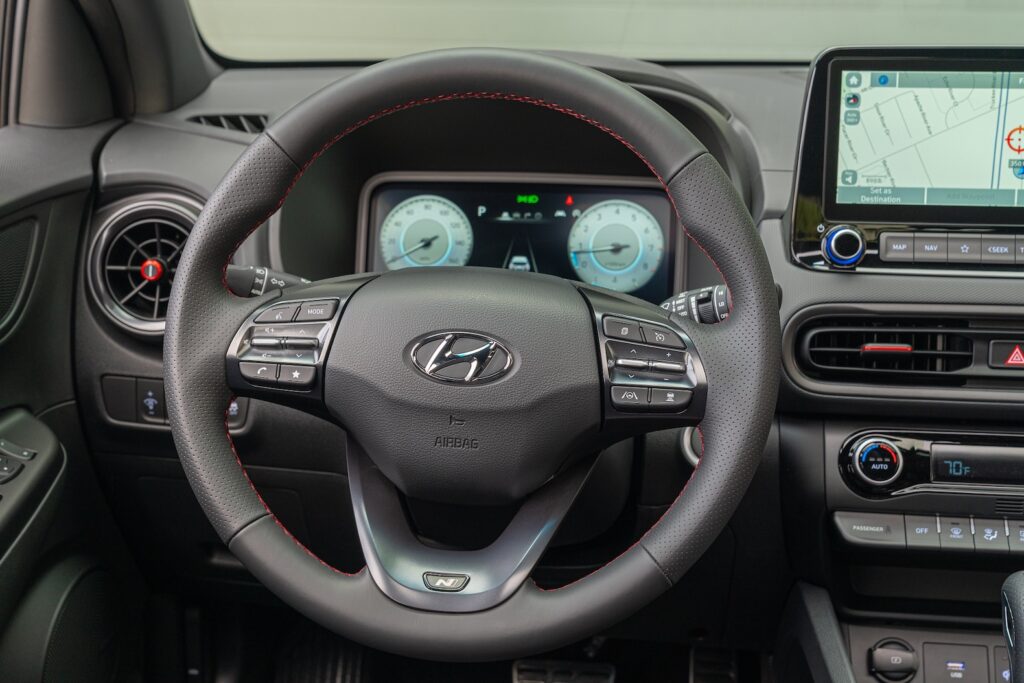
Inside, the interior’s look remains mostly the same. The biggest change is found on top where there’s a new housing for the larger infotainment screens (8.0 or 10.3 inches) and more stylish air vents. The Kona’s upright body shape gives it surprisingly good headroom for front and rear passengers.
The front seat is the better place to be with good bolstering and a nice range of height adjustments. Fitting three adults across the backseat is a challenge due to the narrowness of the Kona, but its shape gives it surprisingly good headroom and sightlines for all passengers except the poor soul in the middle.With the backseat folded down, cargo room expands to 45.8 cubic feet. Its tall body also features a surprisingly low load floor that makes it easier to get cargo in through the wide hatch.
Value is a strength of the Kona, especially in SEL form. Like most Hyundais, the Kona packs in the features for a good value to go along with complimentary maintenance for 3-years/36,000 miles and a robust 5-year/60,000 mile bumper-to-bumper warranty. Add in a base 8.0-inch touchscreen and the Kona earns a 9 in this category.
The base SE trim starts at $22,545 and comes with an 8.0-inch touchscreen with wireless Android Auto and Apple CarPlay connectivity, two front USB ports, cloth upholstery, 16-inch wheels, and cruise control. Most buyers should look to the SEL with convenience package. The SEL starts at $24,345 (just under $2,000 more than the SE) and adds some features, but not enough to justify that price increase. The convenience package costs $1,700 more, but it includes heated front seats, automatic climate control, a wireless charging pad, and a hidden storage compartment in the cargo area.
The downside of the SEL is that it comes with the frustrating 4-cylinder and CVT combination, so those who want more performance should look to the Kona N-Line ($27,095) and its more powerful turbo-4. The N-Line features sportier styling, as well as a 10.3-inch gauge cluster display and a power driver’s seat. It’s also the cheapest Kona to offer the larger 10.3-inch infotainment touchscreen. Buyers should know that upgrading to the larger infotainment screen costs you wireless Android Auto/Apple CarPlay.
The Limited model ($29,845) has the most upscale interior with leather upholstery, a power sunroof, and adaptive cruise control standard. But the most expensive model is the $35,445 high-performance Kona N, which has mostly the same equipment as the Limited (sans leather) and is the most fun model by a wide, wide margin.
The 2022 Hyundai Kona with it’s cute crossover looks is a fresh take on the small crossover mold. Small dimensions, peppy power, and zippy handling dynamics make the Kona a fun urban runabout. Adding cutting edge technology, leading safety, and Hyundai value make the Kona a no-brainer for any small crossover consideration. The updates for 2022 with its larger screen and standard safety equipment only make it more so.

